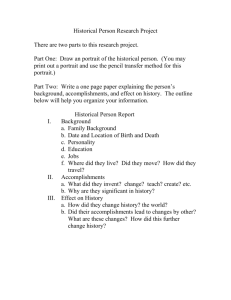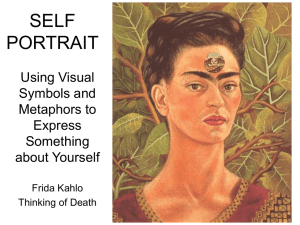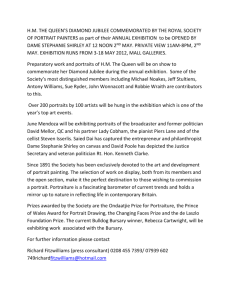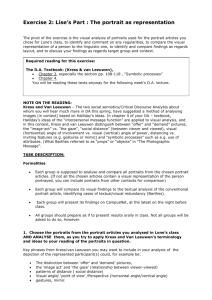Exercise 2: `Corpus Linguistics` – the portrait article as a journalistic
advertisement
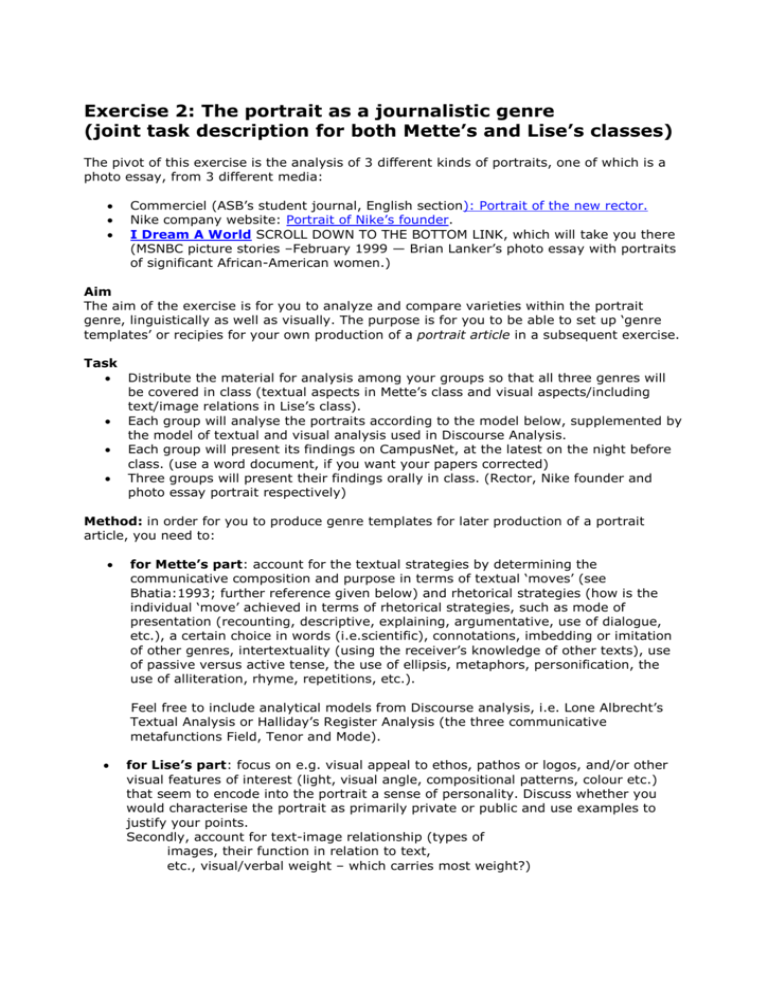
Exercise 2: The portrait as a journalistic genre (joint task description for both Mette’s and Lise’s classes) The pivot of this exercise is the analysis of 3 different kinds of portraits, one of which is a photo essay, from 3 different media: Commerciel (ASB’s student journal, English section): Portrait of the new rector. Nike company website: Portrait of Nike’s founder. I Dream A World SCROLL DOWN TO THE BOTTOM LINK, which will take you there (MSNBC picture stories –February 1999 — Brian Lanker’s photo essay with portraits of significant African-American women.) Aim The aim of the exercise is for you to analyze and compare varieties within the portrait genre, linguistically as well as visually. The purpose is for you to be able to set up ‘genre templates’ or recipies for your own production of a portrait article in a subsequent exercise. Task Distribute the material for analysis among your groups so that all three genres will be covered in class (textual aspects in Mette’s class and visual aspects/including text/image relations in Lise’s class). Each group will analyse the portraits according to the model below, supplemented by the model of textual and visual analysis used in Discourse Analysis. Each group will present its findings on CampusNet, at the latest on the night before class. (use a word document, if you want your papers corrected) Three groups will present their findings orally in class. (Rector, Nike founder and photo essay portrait respectively) Method: in order for you to produce genre templates for later production of a portrait article, you need to: for Mette’s part: account for the textual strategies by determining the communicative composition and purpose in terms of textual ‘moves’ (see Bhatia:1993; further reference given below) and rhetorical strategies (how is the individual ‘move’ achieved in terms of rhetorical strategies, such as mode of presentation (recounting, descriptive, explaining, argumentative, use of dialogue, etc.), a certain choice in words (i.e.scientific), connotations, imbedding or imitation of other genres, intertextuality (using the receiver’s knowledge of other texts), use of passive versus active tense, the use of ellipsis, metaphors, personification, the use of alliteration, rhyme, repetitions, etc.). Feel free to include analytical models from Discourse analysis, i.e. Lone Albrecht’s Textual Analysis or Halliday’s Register Analysis (the three communicative metafunctions Field, Tenor and Mode). for Lise’s part: focus on e.g. visual appeal to ethos, pathos or logos, and/or other visual features of interest (light, visual angle, compositional patterns, colour etc.) that seem to encode into the portrait a sense of personality. Discuss whether you would characterise the portrait as primarily private or public and use examples to justify your points. Secondly, account for text-image relationship (types of images, their function in relation to text, etc., visual/verbal weight – which carries most weight?) Thirdly, for those who analyse the portrait of ASB’s new rector only: Compare the general layout of the article to the layout of the DANISH version of the article (in the same issue of commerciel), and compare the photograph in the article to the FRONT PAGE of the commerciel issue for both Mette’s and Lise’s classes: (textual aspects should be presented in Mette’s , visual in Lise’s) a. Make a list of visual/textual “genre regularities” (relevant textual/visual features of the text/pictures analysed. These regularities might, for example, comprise: - layout (Typography, Formats, text/image size and placement etc.) - macro structure: Titles / headings / captions - stylistics: Length/complexity of sentences, formal visual choices in photos (e.g. colour or black/white photos etc.) b Evaluate and discuss the textual/visual choices used in the analysed material. (Negative evaluation necessitates suggestions for improvement) c Evaluate the usefulness/communicative value for the three different kinds of portraits with respect to the presumed target group and communicative context. - - - - - - - - - - - - - -- - - - - - - - - - - - o - - - - - - - - - - - - - -- - - - - - - - - -- - - Reading for textual analysis: Bhatia, Vijay: Analyzing Genre. Language Use in Professional Settings, Longman Group, 1993, chapter 3, pp.45-75 (Uploaded on Campusnet under file sharing) Suggested reading for visual analysis: Kress et al. , Reading Images: chapter 3, the section “symbolic processes”, pp. 108-118 + chapter 4 The portrait PHOTOCOPIES (placed in C100 on the floor in front of the English shelf) "The Portrait in Photography", ch. 6 in Graham Clarke, The Photograph. Oxford U. Press, 1997, pp. 101-121 Text 11 in the webcompendium: Extracts from Richard Brilliant: "Introduction", in Portraiture, Reaktion Books, Ltd. 1991. pp. 7-21, Text 12: in the web compendium: Extracts from W.J.T. Mitchell: Picture Theory. University of Chicago Press, Chicago/London1995 (1994), "The Photographic Essay: Four Case Studies", pp. 281- 332


